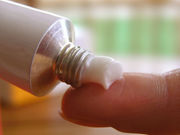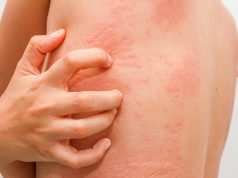Current treatment strategies include use of drug therapy, skin care, avoiding exacerbating factors
FRIDAY, April 29, 2016 (HealthDay News) — Guidelines have been developed for the management of atopic dermatitis (AD). The guidelines were published online April 14 in The Journal of Dermatology.
Hidehisa Saeki, M.D., from Nihon Medical School in Japan, and colleagues developed guidelines for all children to adults with all severities of AD based on published novel findings.
The researchers note that patients with three particular features are considered to have AD, regardless of symptom severity: pruritus, typical morphology and distribution of the eczema, and chronic or chronically relapsing course. Examinations for diagnosis and assessment of severity include serum immunoglobulin E level, peripheral blood eosinophil counts, serum lactate dehydrogenase levels, and thymus and activation regulated chemokine levels. The goals of treatment are to reach and maintain a state in which symptoms are mild or absent without being disturbed in daily activities by the disease. Treatment measures include drug therapy (use of topical corticosteroids and tacrolimus ointment as the main treatment for inflammation); skin care, including topical application of emollients to treat the cutaneous barrier dysfunction; and investigation/elimination of exacerbating factors, including food, environmental and contact antigens, and sweat. Education is emphasized as important for ensuring appropriate treatment.
“It is important for patients and their parents to understand their condition/the significance of treatments, positively participate in the selection of therapeutic strategies, accomplish treatments according to these strategies, and improve the will to continue treatments,” the authors write.
Several authors disclosed financial ties to the pharmaceutical industry.
Copyright © 2016 HealthDay. All rights reserved.








